- 1) Core principles of Branded CEM: how we remember, choose, feel and compare. Differences between actual experience and remembered experience..
- 2) Importance of branded (and memorable) experience versus de-branded or no-branded experience
- 3) Replacing the Hunting Approach with Farming approach.
- 4) Customer Segments pyramid: VOC as VALUE of Customer
- 5) Customers critical needs versus brand values
- 6) Touchpoint experience mapping
- 7) Emotional curve
- 8) Limited resources
- My conclusions
This post summarises my key takeaways from the Global CEM* training and certification obtained earlier this year and the methodology’s elements I most valued and found applicable to any CEM change program.
1) Core principles of Branded CEM: how we remember, choose, feel and compare. Differences between actual experience and remembered experience..
Branded CEM is based on 4 core principles:
- How we Remember – XMOT (Moment of Truth during Experience)
- How we Choose – Effectiveness (Experience Effectiveness)
- How we Feel – X VOC (Voice of Customer at Experience)
- How we Compare – Anchoring (Experience Anchoring)
Satisfaction is about difference between experience and expectations. Improving the experience often has only temporary effects, because soon the customer will become used to the new experience and his expectations will rise again. This is the conventional approach where companies strive to raise the experience bar higher and higher.
Because there are so many experiences that we live at any given moment, our brain can simply not remember everything. Our brain instead can only remember 2-3 moments of each experience and it will usually only remember the peak pain and the peak pleasure. If a given company focuses on too many moments, it’s wasting its limited resources because the customer cannot remember all these moments anyhow. For this reason, the unconventional approach from Lee suggests that we focus company resources only on peak and end.
An experience needs to be memorable to be effective. The more focus on the pleasure-pain gap and the bigger this gap is, the more memorable the experience will be, because this will guarantee the anchoring of the experience.
With regards to how we choose, the latest neurological studies show that our decisions are driven by emotions, and that only at a later moment we rationalise each decision using our rational brain and our language.
How we feel during a given experience is different from how we remember and internalise said experience.
Memorable experience that delivers on brand promises is stored in the Emotional Memory Region (our long term memory) and becomes the “the facto” reference company in that product category. That memory represents the “Experience Anchoring” and impacts how we compare.
2) Importance of branded (and memorable) experience versus de-branded or no-branded experience
The primary objective of CEM is to make customers FEEL good so that they will repurchase (or stay loyal) and spread positive word of mouth (Advocacy).
I especially like Lee’s conclusion that “most CRM programs fail because after implementation, the customer has not FELT anything yet.” The most common metric of “FEEL GOOD” is satisfaction
Given that satisfaction is a variable of experience and expectations, to maximise satisfaction you can either:
- Reduce expectations: this is rather difficult in today’s world, because expectations are continuously raised by each company and its competitors experience delivery, and by the company communication. Expectations can undoubtedly be influenced by improving the communication towards customers to eliminate promises the company knows beforehand it cannot deliver.
- Increase (aka increase) experience. There are two types of experiences:
- Objective: the one provided by the company, tangible and measurable or quantified. When we improve this experience, the benefits are often only short term, because after a while the new experience becomes the new expectation for the customer (i.e. Starbucks reducing average waiting time from 4 to 3 minutes).
- Subjective: the one perceived (and remembered) by the customer, intangible and irrational, emotional and memories-driven.
There are 3 types of subjective experience based on how we remember:
-
- De-branded: memorable but unpleasant; not delivering on brand promise, customer reminds them vividly and saves the experience in their emotional memory region. Creates negative Word of Mouth.
- Branded: memorable and pleasant, delivers on brand promise and satisfies critical needs. These experiences pass the attention gateway; they are stored in our emotional memory region, and they make the company become the de facto reference in that product category. This is where companies need to focus their resources on.
- No-brand: customers won’t remember them because they don’t pass our “Attention gateway” and don’t get saved in our memory. And if they do, they will not link it to the brand. When a company focuses on this one, it is wasting resources.
Delivering a branded experience is the ultimate path to guarantee a higher customer satisfaction.
In short: The most successful companies provide branded experiences that are saved in customers’ memory (memorable branded experiences) and become the standard for that product category.
3) Replacing the Hunting Approach with Farming approach.
CEM is about a replacing companies’ standard “hunting” approach with a “farming” approach.
“Hunting” represents the approach of most businesses to move on to the next hunt as soon as they have acquired a new customerr.
“Farming” instead means nurturing the customer like you would do with a tree that just got delivered or planted. When you nurture a customer, you make sure that you get the maximum customer lifetime value and hence the business cash flow.
4) Customer Segments pyramid: VOC as VALUE of Customer
In CEM VOC doesn’t mean only “Voice of Customer,” but also, and first, “VALUE of Customer.” In CEM projects the first step to do is to draw a customer pyramid because:
- You can’t decide WHO your target customer is if you don’t know who is the most valuable/profitable customer
- You can’t decide how much to spend on a CEM project if you don’t know what each customer group Net Present Values are and what will be the expected return
Drawing different customer pyramid depending on the company business is possible. Some examples are:
- CLV (Customer Lifecycle Value) of each customer segment:using as customer segment variable the # of users per customer and then calculating the NPV (Net Present Value) of each segment
- Gross margin (taking into account acquisition costs and cost to serve)
- # of products (considering all the other products customers may have)
For each pyramid you define the following items:
- Behavioral variables: i.e., yearly revenue, average lifetime of x years, churn rate, per each segment
- Inactive Customers criteria
- Prospects and Suspects
- Actual customer’s segments
5) Customers critical needs versus brand values
Brand values are the values of a brand to drive customers to buy from the company (first-time purchase), to buy more from it (repeat purchase) and to refer the company (advocacy).
Target brand values: the planned reasons of factors the company wants its customer to by from her (this is the brand promise)
Perceived brand values: the actual reasons or factors why customers buy from a company.
Critical needs: Lee’s methodology recommends selecting seven critical needs for the identified customer segment target. You then need to score these critical needs 1 to 5 on the basis of relevancies to your company brand values. In the ideal situation, pick only three critical needs that are extremely relevant to your brand (these score 5), and focus all (or most of) your resources there, while letting all other needs score 1 as these are not not relevant to your brand, hence the focus of your efforts and investments.
Because of the principle explained in point 2 (branded experience), you only need to focus resources on the needs highly linked to your values, because these are the one the customers will remember and relate to your brand. So you perform & deliver highly on needs critical to customers and your brand value, while you don’t focus and, in fact, create some pain in the needs that are highly relevant to customers but not to the brand.
6) Touchpoint experience mapping
In the Total Customer Experience (TCE) Model, you can differentiate:
- Sub-processes: what the customers perceive via their five senses during a particular touchpoint experience which may affect their feelings about a company, brand, product or service; they usually include the various phases of a customer lifecycle (i.e. co-creating, researching, engaging, purchasing, using or getting support)
- Touch-point: the “points of touch” where your customers experience you during their entire customer life-cycle; they usually include search engines, in-store, contact center, the web, etc.
- Touch-point Experience (tx): a combination of touch-point & experience. These denote a specific customer experience delivered via a particular customer facing Touch-point. For example, a pre-purchase doubt (customer experience) could be addressed by the customer via an internet search, a store visit or a call to contact center (touch-points). Each of these combinations require an emotional curve (see point 7). To save resources & focus, you only build an emotional curve for the tx which are most critical to your brand.
7) Emotional curve
The overall experience is carefully designed around the target emotional curve, where:
- “Branded pleasure” are delivered exactly where most relevant to brand promises, at beginning, peak and end of every experience, reinforcing the creation and storing of good emotions every time
- “Good pains” are delivered where insignificant to the brand values
- The pleasure-pain-gap is maximized (difference between 10 & 4 which is the minimum standard)
- There are no pains below the minimum acceptable levels and there are no more “de-branded experiences”
8) Limited resources
Last but not least, what I believe is the critical starting point of Lee’s assumptions. Companies have limited resources, and therefore they need to carefully select only a few moments in the experience where to deliver WOW moments linked to the brand and hence memorable. This careful selection is done at many points in the CEXP path: selecting one or two key target customers, selecting maximum three critical needs relevant to brand values, selecting only most relevant touchpoint experiences, finally carefully selecting moments, where to deliver pain and where pleasure.
My conclusions
These were all important learnings and reminders which I have already been incorporating in my work and methodology since I took the certification training and I will continue to use going forward.
Probably because I have a different view on the last point (#8 Limited resources), I ultimately only take in a part of the methodology, rather than all of it. With this post I tried to my key learnings from an objective point of view. In the second post of this series, I express my personal take on the methodolog.
I firmly believe that, while companies’ resources are inevitably limited, these can be spent in a much more meaningful, efficient and effective way, ultimately exponentially increasing happiness & engagement of customers and employees, and therefore triggering repeated business and flourishing growth. By creating this virtuous circle resources regenerates quicker and easier, ultimately self-refilling themselves. Think of:
- The additional revenue (and lower costs) generated by happier customers with lower churn rate and higher advocacy rate
- The net cost saving that can be made in the sales area by paying fewer sales commission (by making more sales via web channel and thanks to advocacy referrals)
- The different allocation of advertising budgets towards creating and delivering a magical experience to customers which then becomes a viral hit. I’m thinking of the many such experiences provided by WestJet over and over again: WestJet Christmas Miracle is my absolute favorite (with 42 million views and a massive viral traction not only in Christmas 2013 but also in 2014!) but also the latest Frozen-themed plane has already 1 million views. These videos are a pleasure to watch because they warm-up your heart. They make you feel! They WOW you!
- Happier engaged employees mean less sickness & less turnover, while happier engaged customers means less complaints & less churn, and ultimately less costs & more resources to invest in delivering WOW experiences
It becomes a virtuous circle everyone benefits from!
What about you? Which of these elements resonate with you? Which experience circle do you prefer to live in – both as a customer and as employee, product maker or service provider?
*Note: Global Customer Experience Management (CEM) Certification Program is developed based on the U.S. patent-pending Branded CEM Method and is delivered by Sampson Lee and Brownell O’Connor, with an agenda covering all of the key elements of Customer Experience Management. Copyright belongs to Global CEM. All Rights Reserved.




 A (little Italian) sunshine of energy, enthusiasm, and passion, with a mission to bring more happiness in the world one interaction at the time, the business world being my chosen playground!
I inspire and empower conscious leaders to nurture their happiness (moving from depleting to enriching emotions) and to move from depleting to enriching experiences, choosing, designing, and delivering WOW life-enriching interactions that contribute to everyone’s HAPPINESS, so they can achieve business and personal prosperity, making happiness their competitive advantage
A (little Italian) sunshine of energy, enthusiasm, and passion, with a mission to bring more happiness in the world one interaction at the time, the business world being my chosen playground!
I inspire and empower conscious leaders to nurture their happiness (moving from depleting to enriching emotions) and to move from depleting to enriching experiences, choosing, designing, and delivering WOW life-enriching interactions that contribute to everyone’s HAPPINESS, so they can achieve business and personal prosperity, making happiness their competitive advantage 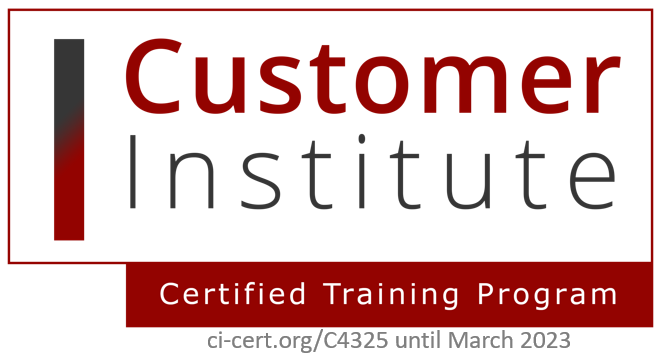

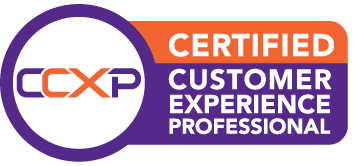





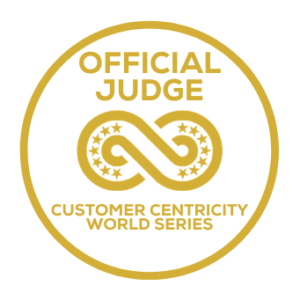
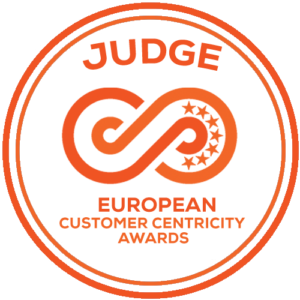
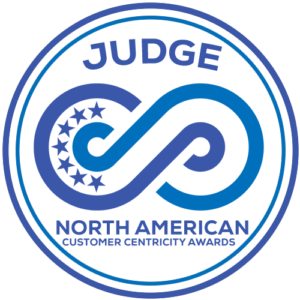
Thank you so much for the helpful and informative article.
Brilliant piece of work, thank you for sharing with us these things we need to know about branded customer experience management.
This was a very interesting article. What a thoughtful and useful piece.